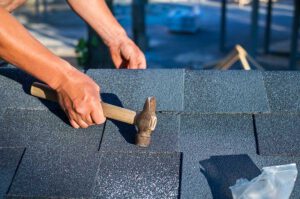Personal Injury Lawyer Ogden Utah handles accidents caused by medical malpractice, car crashes, and defective products. They help victims recover compensation for their losses, including past and future medical expenses, property damage, and lost wages.
They will also negotiate for non-economic damages, such as mental anguish and emotional distress. Each personal injury case is unique. Some settlements take just a few months, while others can stretch out for over a year.
Strong documentation and evidence play a key role in personal injury cases. A good personal injury lawyer knows what to look for and will diligently gather the necessary documentation to establish a successful claim. This evidence includes medical records, photographs or videos of the accident scene, and witness testimonies.
When it comes to medical records, the more information your personal injury lawyer has regarding your injuries, the better they will be able to understand the extent of your damages. It is important to keep track of all treatment and hospital visits, including dates, times, and diagnoses. In addition, it is a good idea to document your daily symptoms and how your injuries have impacted your life. A jury or judge will consider this when awarding pain and suffering damages.
Your attorney will also need to obtain copies of any official documents that relate to the incident, such as police reports or insurance company documents. In many cases, this can be done by simply requesting these documents from the agency or organization in possession of them. However, some evidence may have been destroyed or faded with time, so it is critical to act quickly.
In some cases, your attorney will need to acquire expert witness testimony. This can include doctors or therapists who specialize in your specific injuries. Expert witnesses can provide unbiased opinions and help your personal injury lawyer build their case.
A personal injury lawyer will also take into account any financial losses you have suffered due to your accident, including past and future lost income. This can be documented by tax returns, employment contracts, paychecks, and other documentation. They will also factor in any non-financial losses, such as pain and suffering, emotional distress, and loss of consortium or companionship. They will use this information to advocate for the appropriate monetary compensation to cover your damages.
Performing a Liability Analysis
Once your lawyer has collected all relevant evidence, they will perform a thorough liability analysis. They will review statutes, case law, and legal precedents to determine if you have a valid reason for filing an injury lawsuit against the responsible parties.
This is a critical step because it will help your attorney determine how to argue that the person or company responsible for your injuries failed to act in a reasonable manner and caused your damages. Depending on the circumstances, your injury claim may fall under different theories of liability, including negligence, strict liability, or breach of warranty.
During this phase, your attorney will also seek out expert witness testimony if necessary to bolster your claims. This could include experts in interpreting accident reports, determining how your injury was caused by the incident, or calculating what your future medical treatment and expenses will be.
Throughout this process, your lawyer will negotiate with the defendant’s insurance company to get you the best possible settlement. They will also file several pre-trial motions, which are requests for a ruling on specific issues that affect the case. It’s important to have your attorney handle negotiations because insurance adjusters are trained professionals who will use tactics like recorded statements and interrogations against you to minimize their company’s financial responsibility. Your lawyer will also be able to prevent you from making any statements that could potentially hurt your case in the long run.
Preparing for a Meeting with Your Attorney
If you are in the process of hiring a personal injury attorney, it’s important to be prepared for your first meeting with them. You should come with questions that you have, information that you think is important, and a list of priorities for your case. This will help you keep your meetings productive and on track.
Before your first appointment, you should also collect any documents or photos related to your accident. This will vary depending on the type of accident, but it can include police reports, witness statements, medical records and bills, and other expenses related to your injuries or loss. Keep these in a manilla folder that you can bring to your consultation.
When you meet with your lawyer, they will want to review all of this information to understand your case and determine if they are the right fit for you. They will likely ask you some general questions about the facts of your case, such as the date of your accident and what you’ve been doing since then. They will also discuss their fees, if any, and how they work with their clients to achieve positive outcomes.
Depending on the nature of your case, your attorney will also review narrative medical reports from your treating physicians. These reports describe your injuries, treatment, initial diagnosis, prognosis, and any disability information. They will also ask you to describe any pain, suffering, and other losses you’ve experienced due to your injuries. Once all of this is compiled, your attorney will be ready to begin negotiations with the insurance company representing the negligent party in your case. They will use this information to present your claim to the insurer and negotiate a settlement that is fair and in line with the damages you deserve.
Negotiating a Settlement
The insurance company will likely be reluctant to settle, so you need a strong lawyer to negotiate a higher settlement. Personal injury attorneys understand how to convince an insurer to take victim claims seriously and provide a reasonable compensation amount.
To do this, your personal injury attorney will present evidence of their client’s losses, including medical bills, lost income, future costs for additional treatment, and other tangible and intangible damages. They will also identify liable parties and their insurance policy limits.
Depending on the case, you may have to submit a demand letter to the insurer or defendant. It should be clear and concise and include details about your injury. It should also be slightly higher than your estimated claim value to allow for negotiation.
Once the insurer has received a demand letter, they will usually make an initial offer. This initial offer is typically very low and will be a common tactic used by insurance companies to discourage victims from accepting an unfairly low settlement offer.
A good personal injury lawyer will know how to respond by countering with a more reasonable offer and then continuing the negotiations. This process can take weeks or months to complete.
The goal of a personal injury lawyer is to reach a settlement that fairly compensates their clients for their losses and prevents them from having to go through a costly trial. However, it is important to remember that if the settlement is not adequate to cover all of your losses, you have the right to file a lawsuit against the at-fault party. Taking the case to trial can result in higher awards because your legal team will have the evidence to support your claims and your right to fair compensation.
Taking Your Case to Trial
Once your personal injury lawyer files your lawsuit, a preliminary conference will be scheduled. At this meeting, the defendant is entitled to request a physical examination of you with regard to the injuries you are claiming. This is called a medical examination, and our firm will help prepare you for this step in the legal process. Failure to comply with this requirement can result in the court dismissing your case, which means you will never recover any money for your injuries.
Once the defense attorneys and insurance companies have all of your medical bills, reports, income loss documentation, and liability analysis, they will typically make a settlement offer. Your personal injury attorney will then negotiate the best possible settlement for your damages. This may involve preparing interrogatories, depositions, and other written questions for the opposing party to answer under oath.
After negotiating the best settlement for you, your personal injury lawyer will prepare what is known as a “bill of particulars.” This document sets out the specific losses that you are claiming, such as past and future medical expenses, lost wages, and property damage. It also includes your general damages, such as pain and suffering.
The personal injury law field is incredibly broad and includes a large number of potential claims. Most attorneys choose to concentrate on a single specialty area within personal injury and focus their time and energy on pursuing only that type of legal issue. This helps them become very thorough and knowledgeable in arguing cases regarding certain types of personal injury accidents, such as car accidents, workplace accidents, aviation crashes, and medical mistakes. As a result, they can be very effective in helping their clients receive the maximum amount of compensation for their injuries.



